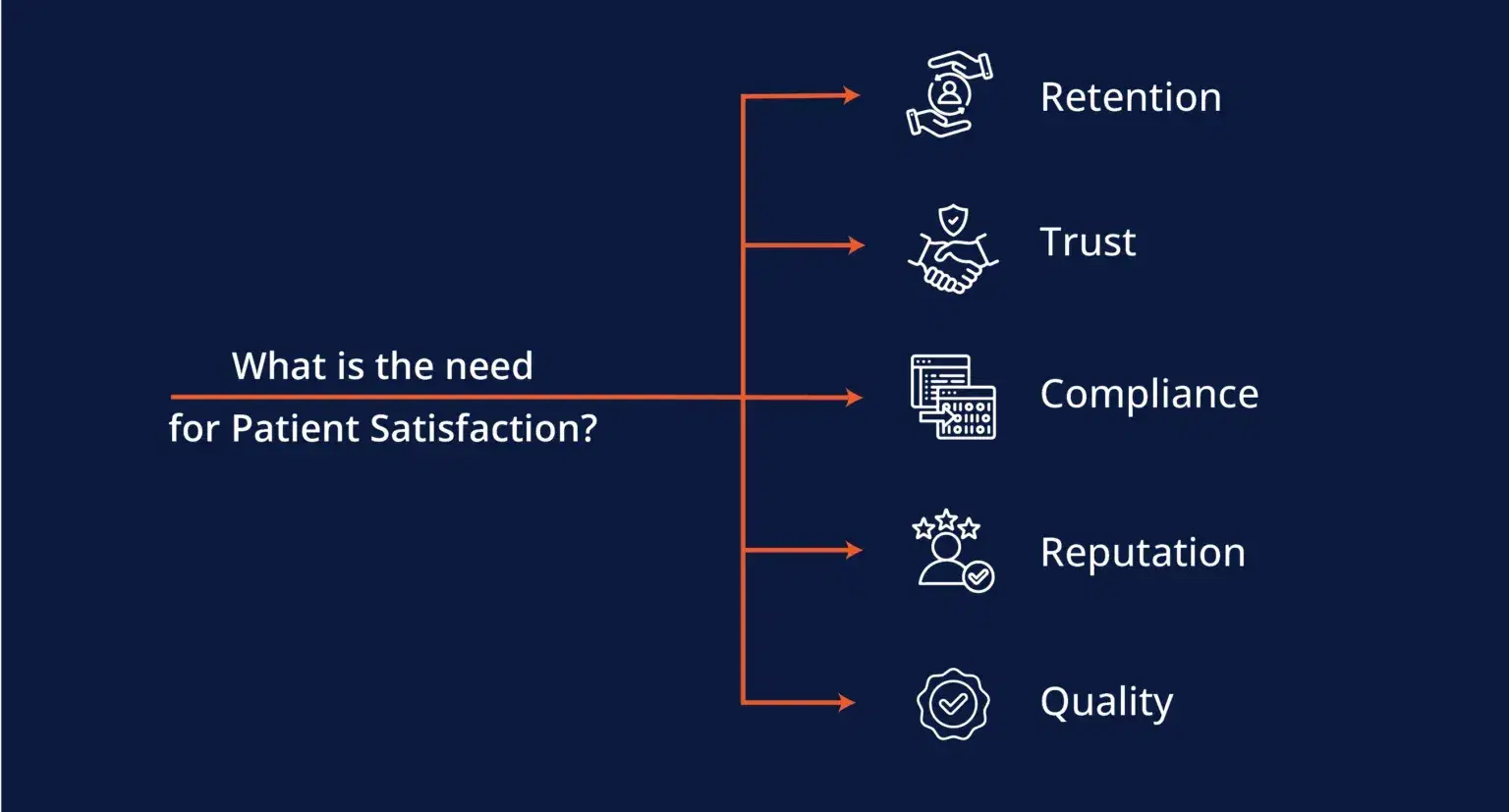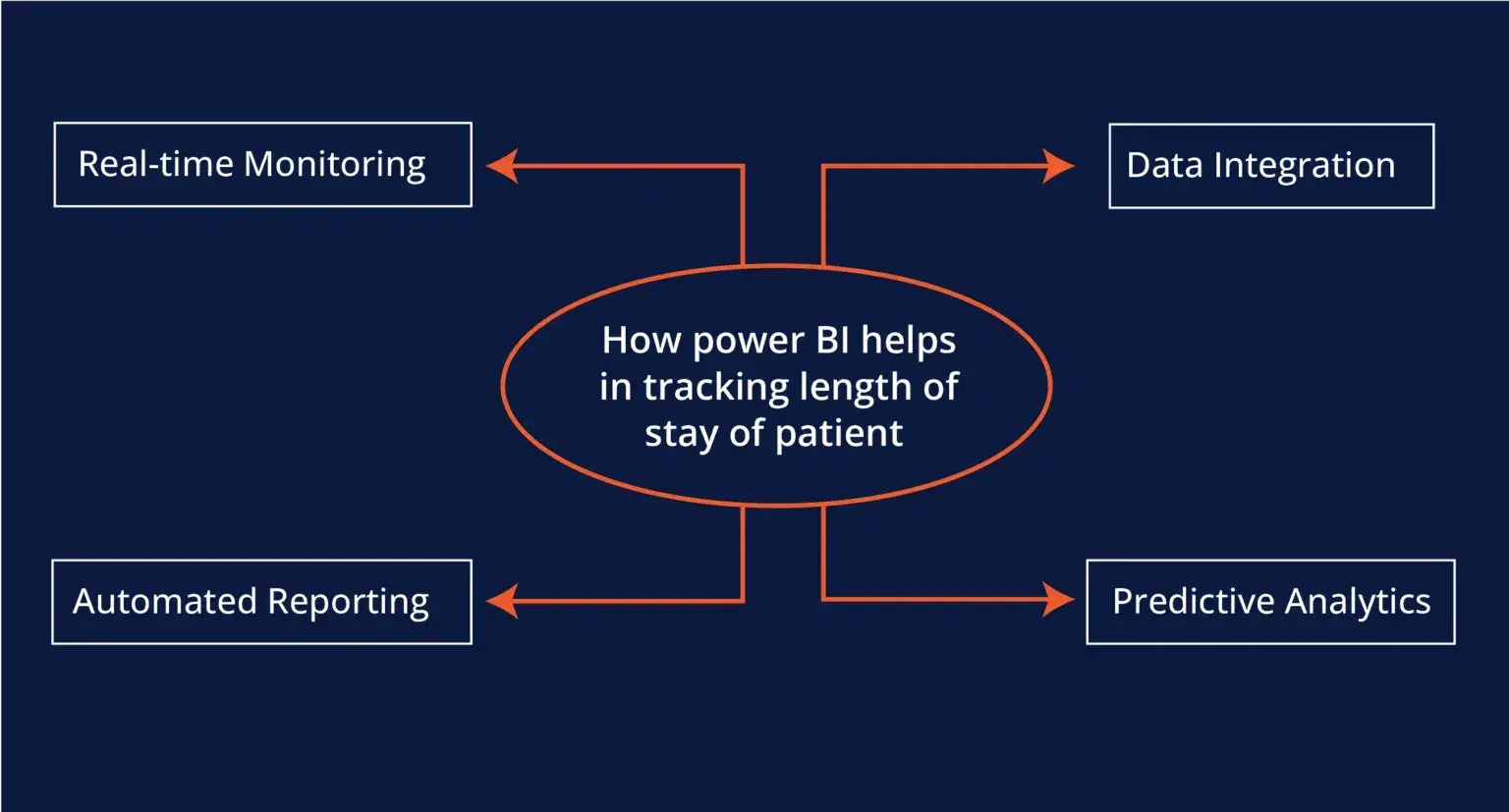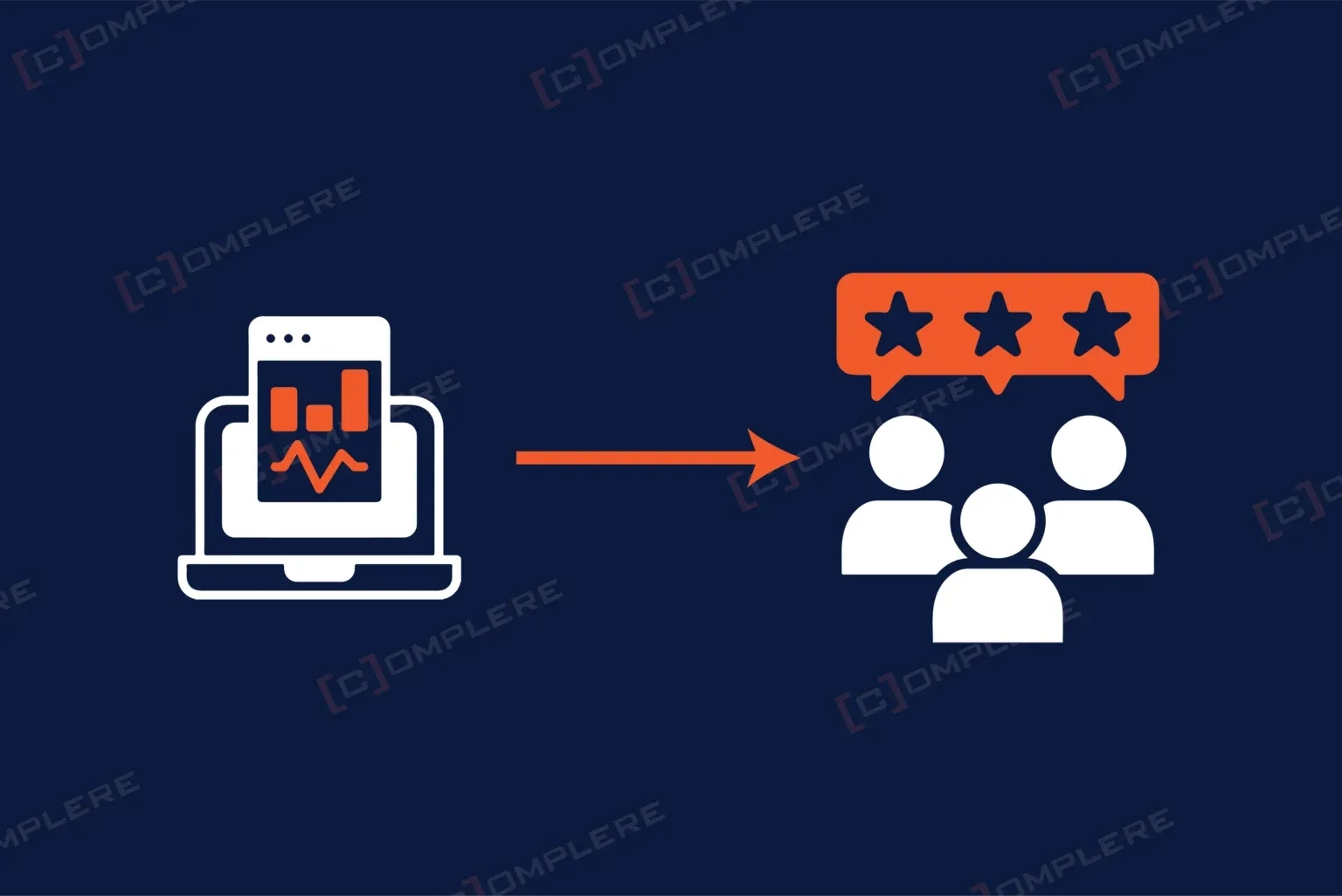What is Patient Satisfaction?

How can Power BI improve patient satisfaction effectively for healthcare?
Power BI services allow healthcare providers to track and analyze key metrics influencing patient satisfaction. By effectively utilizing Power BI analytics and reporting features healthcare organizations can also take proactive steps to improve the satisfaction of their patients.
Must know top 8 metrics to increase patient satisfaction through effective Power BI dashboards and reporting
1.Patient Wait Times:
One of the most significant factors affecting patient satisfaction is the time they spend waiting for care. Long wait times can make them frustrated and dissatisfied. To avoid patient frustration, healthcare providers started using Power BI reporting. It allows you to track waiting times across different departments. It also helps identify challenges and areas for improvement. Healthcare providers can monitor all processes through reporting, which reduces wait times and results in happier patients.
For example, imagine a busy hospital where patients mostly face long wait times. Using the capabilities of Power BI, the hospital tracks how long patients wait in different departments, like the emergency room or outpatient clinics. The data shows that the emergency room has the longest wait times. With this valuable data, the hospital allocates more staff to that department, reducing wait times and making patients feel more satisfied with their care.
2. Scheduling Appointment Efficiency:
Dashboards:
Is it easy for a patient to schedule appointments? This is mostly a question asked by healthcare experts because this is the most important thing for determining patients’ overall satisfaction. Power BI dashboards can visualize appointment scheduling patterns, helping you to optimize your scheduling system. By improving appointment availability and reducing scheduling conflicts, you can easily make sure that the patients have a better medical experience.
For example, A clinic faced issues with patients having trouble scheduling appointments. Using Power BI dashboards, they noticed most patients tried booking during busy hours which caused delays. With this information, the clinic added more time slots during busy hours and sent reminders to prevent missed appointments. This made scheduling easier for patients and improved their overall experience.
3.Patient Feedback Scores:
Collecting and analyzing patient feedback is important for improving services. Power BI Reports allows you to create custom reports that can help in tracking patient feedback scores. By analyzing these scores, now you can easily identify areas where your services are doing good and areas that need improvement. This data-informed approach helps you to make informed decisions to improve patient satisfaction.
For example, A hospital wanted to improve its services, so it used Power BI to track patient feedback. The reports showed patients were happy with the nurses but frustrated with long wait times. The hospital then focused on fixing the wait time issue, which resulted in higher patient satisfaction.
4.Length of Stay:

The length of time a patient spends in your facility can significantly impact their overall satisfaction. Power BI analytics can track the average length of stay for different patient groups and procedures. You can easily identify trends and take steps to make sure that patients receive the required care. It also saves you from unnecessary delays.
For example, a hospital used Power BI to track how long different patient groups stayed. They noticed some patients were staying longer than required after routine procedures. With this information, the hospital made changes to speed up care to assure patient’s overall satisfaction.
5.Effective Treatment:
The length of time a patient spends in your facility can significantly impact their overall satisfaction. Power BI analytics can track the average length of stay for different patient groups and procedures. You can easily identify trends and take steps to make sure that patients receive the required care. It also saves you from unnecessary delays. For example, a hospital used Power BI to track how long different patient groups stayed. They noticed some patients were staying longer than required after routine procedures. With this information, the hospital made changes to speed up care to assure patient’s overall satisfaction.
6.Quick Staff Responds:
7.Follow-Up Care:
8.Patient Engagement:
Conclusion:
In healthcare today, patient satisfaction is key to success. Power BI tools for advanced analytics and dashboards help you to track important metrics. For example, Power BI can help improve wait times, feedback, and treatment results. By using this data, healthcare providers can reduce delays and keep patients satisfied. It also helps organizations make smarter decisions, improving patient experiences and making it important for providing best care.
Want to create effective data analytics to make your healthcare more effective? Explore how these metrics help you to satisfy your patients and make them your loyal customers.















